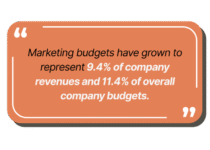Freelancers: 5 Tips to Build Strong Client Relations
My favorite projects are the ones where I “connect” with the client.
I feel like we’d grab a coffee or lunch in the same town and enjoy exchanging ideas.
It’s the best feeling!
Plus, they love your work, appreciate what you add to the team, and pay professional rates on time.
#winning!
And if you’re anything like me and the other freelance writers I know, you want long-term relationships. After all, repeat business is the key to a freelancer’s profitability.
So, how can you ensure your next project starts on the right note?
5 Tips for a Project Kickoff That Soothes Your Clients and Makes Them Weep for Joy
Ok, so maybe I’m being a *tad* dramatic. They probably won’t weep with joy. However, a friendly welcome message explaining what they can expect next will not go unnoticed.
After all, they want you to succeed. They could have hired a dozen other writers, but they picked you.
This is your chance to set the tone and ensure everyone knows the objectives and path forward.
1- Clear Communication
Once the contract’s signed and the deposit’s hit your bank account, it’s time to schedule your kickoff call.
On your call, you can re-iterate your processes. You can talk them through your research process and ask more questions about the client’s audience.
If you haven’t already, this is an excellent time to establish what “good” looks like. I like to ask for examples of content the client likes and why they like it.
Why? Because not all clients are good at articulating what they mean by something vague like “more professional.”
I know a freelance writer who got client feedback that they wanted the piece to be “more professional.” She was mystified until a conversation revealed it meant “include a statistic in the opening paragraph.”
(Why didn’t you say so? She wondered.)
So ask.
You can also check in regularly to update them on your progress if you’re working on a big project. Even if your assignment is writing a few blog posts, it can be helpful to send an email in-between the assignment and the due date to let them know it’s all good.
2- Quick Wins
If you can give your new client a “win” within a few days of starting the engagement, you’ll boost their confidence.
You’ve already discussed your goals for the piece and how you’ll measure success. You’ll stand out if you can deliver a quick win within the first few days of the engagement.
What would that look like?
It depends on the project, but do what you can to ensure they feel confident you can help them solve their problem
3- Create a Welcome Document
One of those things you can do to boost confidence is by sending a welcome packet.
Even if you have a “work with me page” on your site, having a separate document you send to new clients can be useful.
SaaS writer Lizzie Davey says she sends a welcome doc to potential new clients.
This document includes your processes, working hours, preferred means of communication, and payment terms. This is also where you can re-iterate the number of revisions you offer and how you handle feedback.
For example, I ask clients to let all stakeholders comment on the document and then let me know it’s ready for revisions. This prevents the back and forth of me revising and thinking I’m done when someone else turns up lurking in the document and delivering new comments.
It sets clear expectations and shows your professionalism.
4- Set Expectations Around the Scope
Problems arise when people miscommunicate, and the internet is rife with tales of “scope creep.” Scope creep is the dreaded scenario where freelance writers think they’re doing x, and the client asks for x, y, and z.
Sometimes scope is straightforward. You will write an 800–1000 word blog post on x topic and deliver it on a specific date. You have a blog brief for relevant information; otherwise, it’s a simple project.
But when talking about more significant content strategy projects with customer research, content audits, and other deep-dive research, you’ll need benchmarks and set clear expectations about what you’ll deliver, how many meetings you anticipate, whether you’ll join the Slack channel, etc.
5- Listen
Every interaction is your chance to build trust with your client. One way you can do this is by listening to their goals. Ask probing questions about why they want to do this project now and what it’ll mean for their business.
“Tell me more about that” is one of my favorite questions because sometimes it gets below the surface where you can discover what really matters to the client.
That’s where you want to be. Solving the problem they REALLY wish to solve. After all, no one wants “content”; they want new leads, signups, etc.
Whether you’ve worked with one client or a hundred, you probably recognize the importance of establishing a positive working relationship.
When your clients trust you, like your work, and have more work for you, life as a freelancer is goooooooooood.
What would you add?

